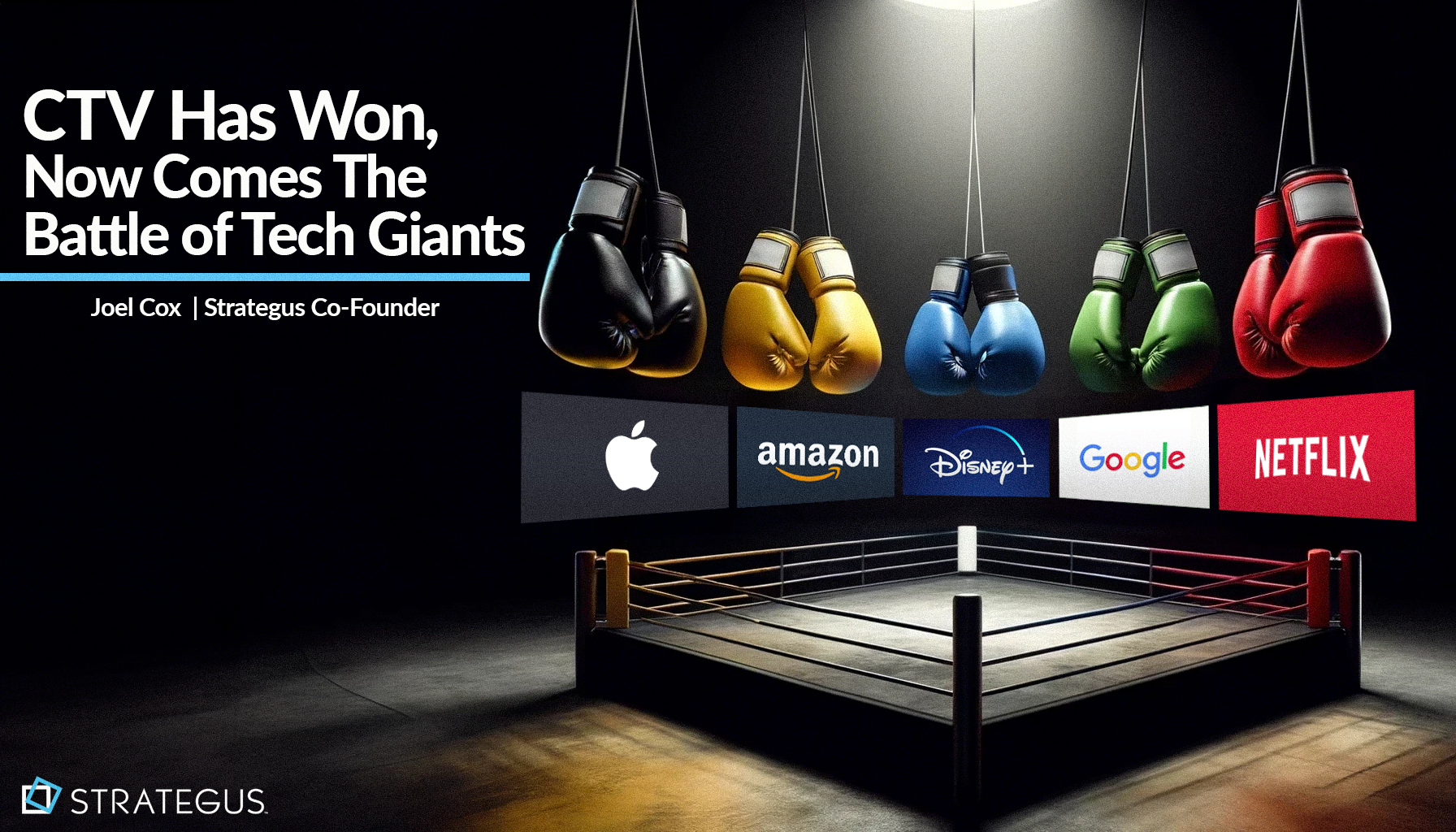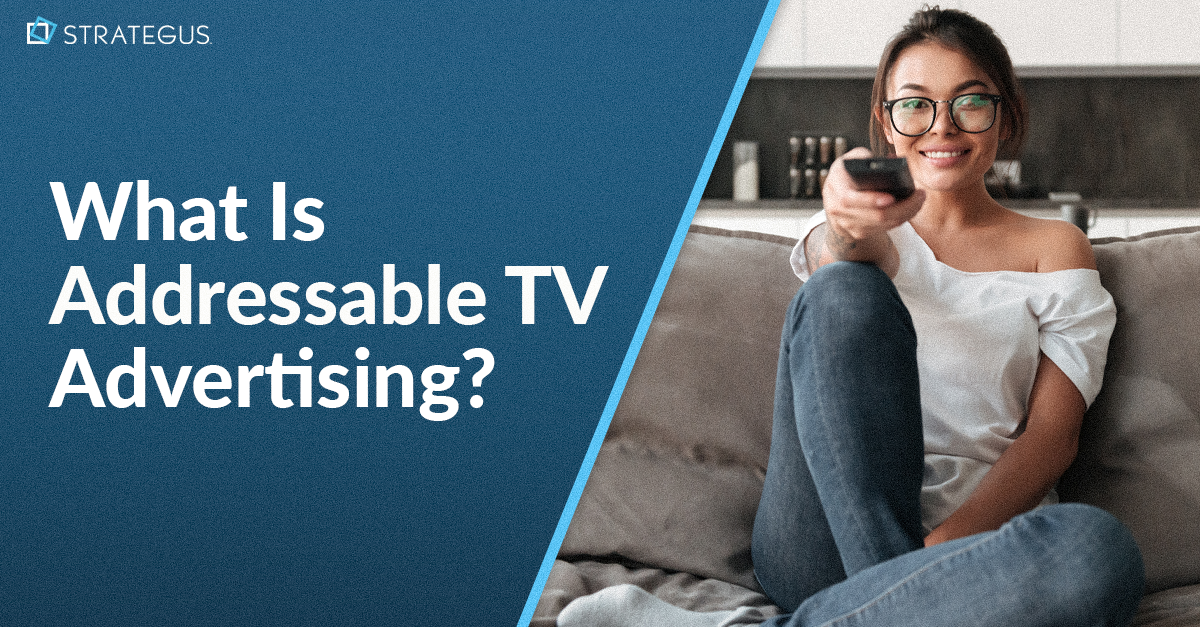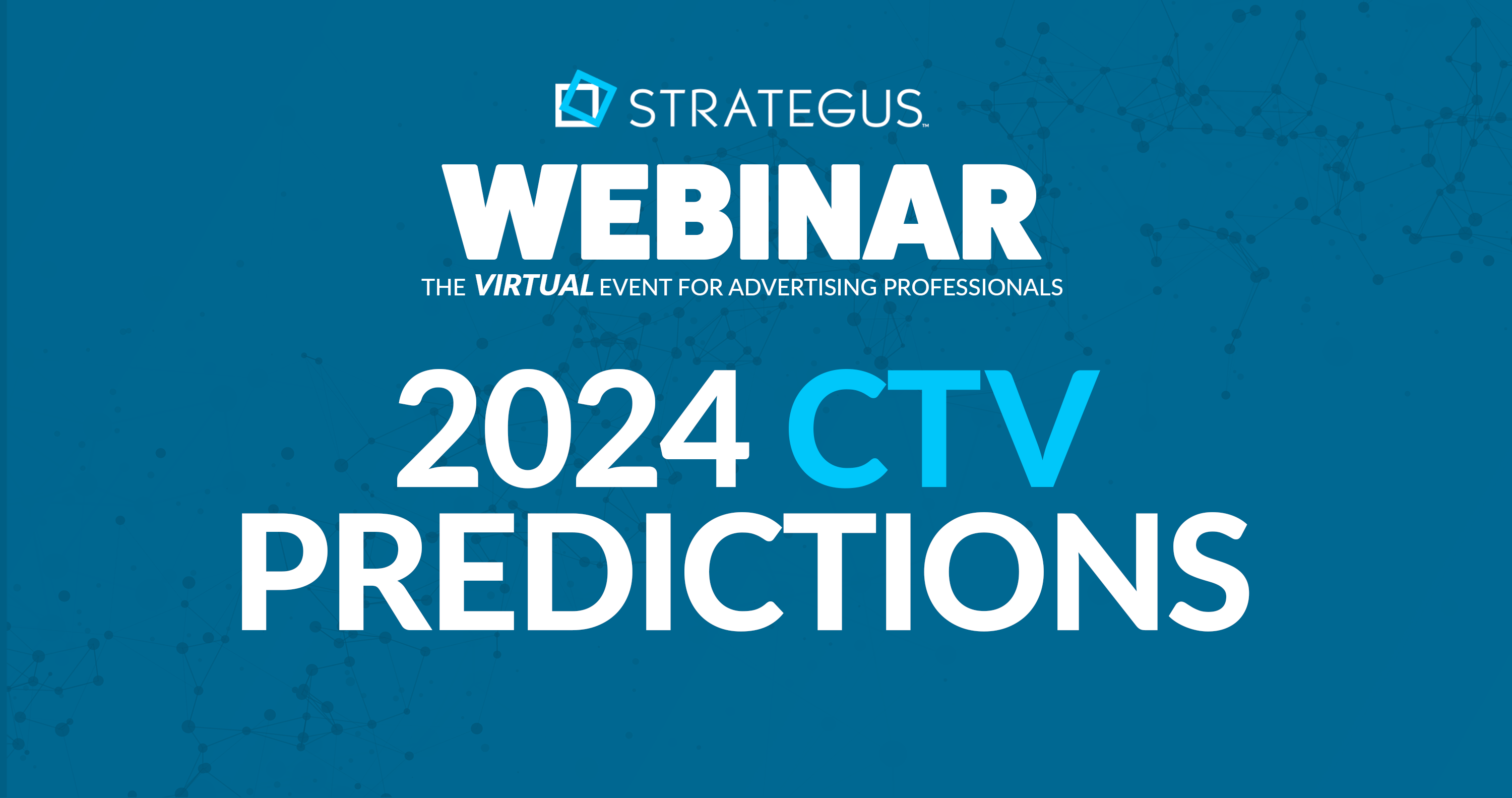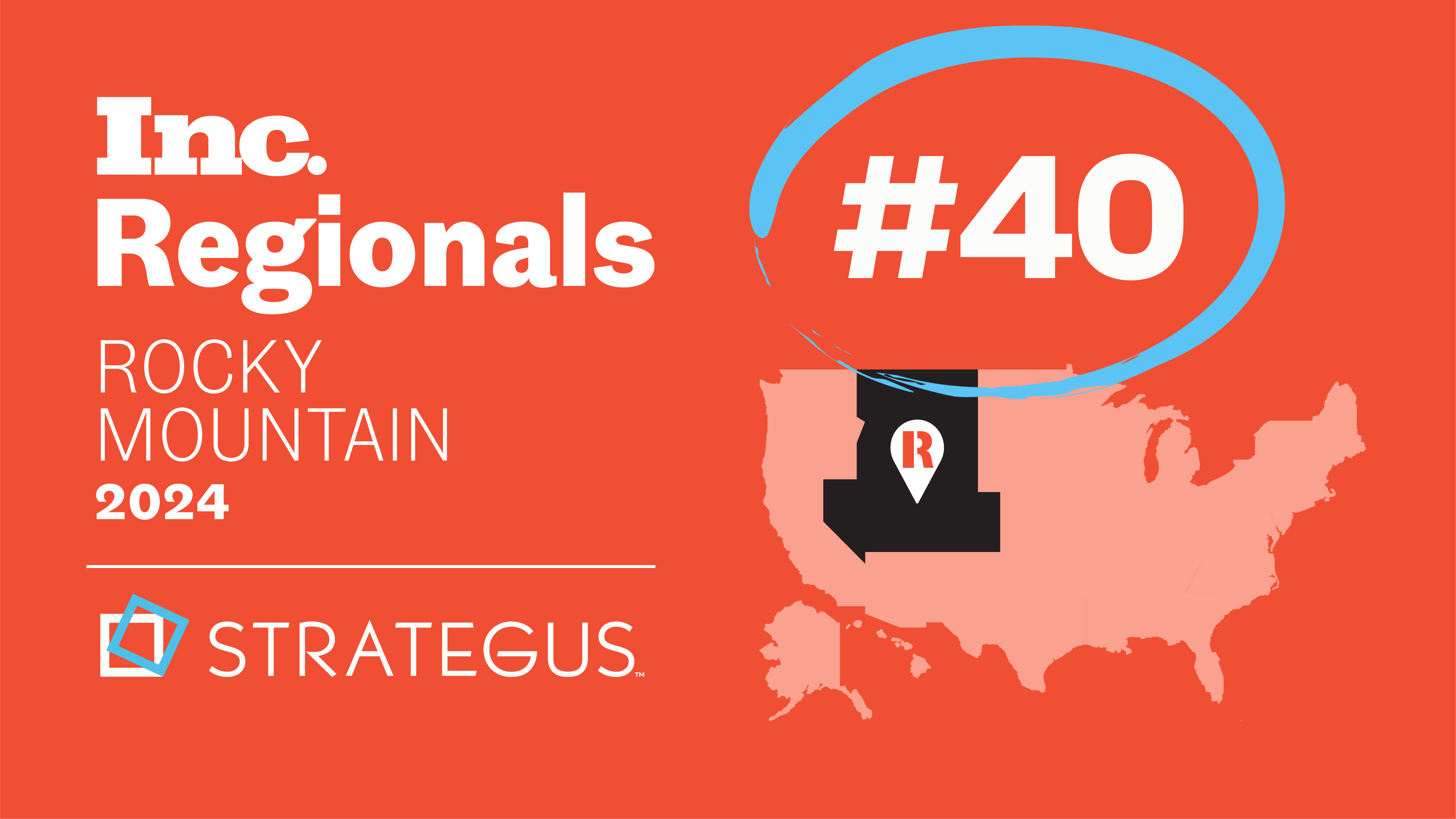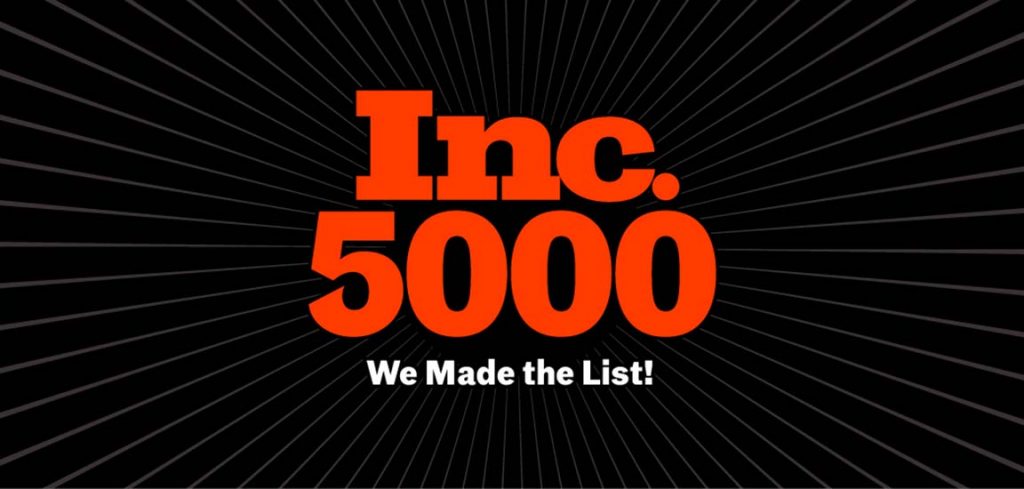AVOD vs SVOD vs MVPD vs OTT — Ultimate VOD Guide For Advertisers
 Andy Dixon
Andy Dixon
11 minutes read

AVOD vs SVOD vs MVPD vs OTT? Regardless of your role in advertising, it is always advantageous to keep up with the latest trends and development in the industry. With the pace of evolution in the current landscape, that is a lot easier said than done. Our team made it simple and put together a comprehensive guide on everything there is to know about video on-demand for advertisers.
In this post, we will cover the following topics:
- SVOD AVOD OTT CTV: Acronym Overload — What’s the Difference?
- A Strategic Approach To AVOD Advertising/Marketing
- Minimizing Ad Creative Fatigue On OTT/CTV Channels
- Driving Actions on Advertising-Based VOD Services and Measuring Them
- 3 Ways Advertising-Based Video On-Demand Is Creating Opportunity for Advertisers
- SVOD vs. AVOD — Is Advertising-Based Video On-Demand the New King of OTT?
- AVOD vs. MVPD OTT — An Advertisers Guide for the Future
- Best AVOD Services for CTV/OTT Advertising
AVOD vs SVOD vs MVPD vs OTT: Acronym Overload — What’s the Difference?
There are a lot of acronyms thrown around in digital advertising, especially as trends change or evolve. The simplest way to understand how all the various terms are connected is to think of it as a hierarchy, with OTT being the overarching medium that encompasses everything else.
The Difference
- CTV is a subset of the entire OTT video ecosystem. Connected television, or CTV, references any television that has the ability to stream internet content. This includes the smart TV, which can connect directly to the internet and has pre-installed apps, as well as standard TVs that are used as a display for devices like Amazon’s Fire Stick, AppleTV, Roku, etc.
- SVOD is subscription-based video on-demand. The key word to remember when thinking about SVOD is subscription. The second important aspect is ad-free viewing experiences. Streaming services such as Netflix, HBO, or Hulu are all considered SVOD since a monthly premium membership is required to access content without ads.
- AVOD is advertising-based video on-demand. AVOD services, also referred to as free ad-supported TV (FAST), are an alternative to premium membership streaming services and a large majority will be free to viewers. For higher demand platforms, AVOD references the lower tiered subscription which supports ads (think Hulu’s $5.99/month subscription).
>> Read our full post on the difference between SVOD, AVOD, OTT, and CTV here.
A Strategic Approach to AVOD Advertising/Marketing
With the industry in a state of constant change, it is important to have a solid understanding of best practices to be able to deliver results. Beyond the typical performance metrics, having a strategic approach also means managing concerns like ad fraud, brand security, vendor credibility, and more.
Key Concepts
- Forecasting Impressions vs. Desired Reach
In traditional marketing, the rule of thumb is to cast a wider net and maximize the number of impressions. This was the best way to optimize reach to individuals that fit within the target audience demographic. With modern digital advertising, the advanced audience targeting ability means that lower reach is not necessarily a bad thing, since the quality of impressions is better.
- Awareness and Impressions Are Easy; Conversions Are Hard
At the end of the day, the goal of every advertising campaign is to drive results. In our realm, this means conversions. One of the early critiques of advertising via OTT/CTV is that ads are not “clickable” and therefore not actionable. However, there are ways to simulate action with sophisticated retargeting tools such as the Encore Omnichannel, which allows advertisers to immediately retarget viewers with relevant calls to action on other devices like mobile phones, laptops, tablets, and more.
- Conversions Don’t Have to Be “Clicks” — Attribution Is King
When we discuss conversions, we often only think about click-through rates. This isn’t always the right way to look at the success of a campaign, since AVOD ads aren’t technically actionable to begin with. Following this logic, being able to attribute engagement and actions is a far more impactful metric to measure. Advertisers should be able to answer the question: Who saw your ad, and what did they do after?
The Strategus Attribution Suite addresses this issue with customizable components for both online and offline attributions, including after-ad influence, offline conversion tracking, and post-view attribution.
>> Read our full post on the strategic approach to AVOD advertising here.
Minimizing Ad Creative Fatigue on OTT/CTV Channels
As humans, we are naturally drawn to things that are new and fresh. This is also true when it comes to ad creative. People will grow tired of seeing the same content and disengage with ads that are not interesting, exciting, or new.
What Is Ad Creative Fatigue and Why Does it Matter?
Creative fatigue is what happens when the same “creative” content is shown repeatedly and causes consumers to disengage. For example, your audience may find a specific brand’s ads and ad styling to be too familiar, and therefore predictable or boring. This is a problem because it can trigger any or all of the following:
- Ad campaigns become less effective over time, damaging the ROI
- Overall VCR (video completion rate) and CTR (click-through rate) decreases
- Fewer conversions and both online/offline attributions
What Are Best Practices to Minimize Creative Fatigue?
Ad creative fatigue will always play a role, small or large, so it cannot be eliminated fully. It can be mitigated, however, by following any or all of the following tips:
- Have three creatives rotating at any point in time so your targeted audience isn’t seeing the same ad repeatedly.
- If running less than three creatives per month, consider changing the creative quarterly. Data indicates that creative fatigue typically takes place around the three-month mark.
- Exclude people who have already engaged with your ads to increase overall brand loyalty and reduce the sense of being spammed.
- Monitor campaign frequency. In general, higher frequency will result in quicker creative fatigue while lower frequency means slower creative fatigue.
>> Read our full post on minimizing ad creative fatigue here.
3 Ways Advertising-Based Video On-Demand Is Creating Opportunity for Advertisers
As the new normal brought about by the COVID-19 pandemic shifts consumer behavior, there has been a rising trend with viewers opting in to AVOD/FAST services. This pivot is actually a return to the old ad model, which is great news for marketers. We see this in three distinct areas:
- Ad Revenues Are Growing YoY for AVOD
Year-over-year ad revenue shot up 31% in 2020 for five of the major ad-supported streaming platforms (Roku, Hulu, Peacock, Pluto TV, and Tubi). This is a result of the following:
- Saturation — With major media players launching new services, the digital streaming space is becoming increasingly saturated. This presents an issue as viewers will leave one service for another, or abandon SVOD services in general due to the price points.
- Live Programming — Unlike SVOD services, AVOD services like Roku Channel or Pluto TV are able to offer live programming for both national and local news. With consumers looking for sources to tune into current events, we can anticipate a lift in AVOD usage and streaming hours.
- OTT/CTV Advertising Drives Leads
When we think of AVOD advertising, the best approach is to think of it in the context of OTT/CTV advertising as a way to drive leads. This allows advertisers to focus on some core advantages that should be leveraged for any AVOD campaign:
- Ads are non-skippable on AVOD streaming services
- Internet-connected TV ads are nearly 100% viewable
- The audience is already actively engaged and less likely to leave when an ad campaign runs
- OTT and CTV ads are more easily targeted to desired consumers compared to traditional TV ads
- Sophisticated data points allow for retargeting only to viewers that have watched the ad to completion
- AVOD Offers the Ability to Hyper-Target
The amount of data that is accessible to advertisers with AVOD or OTT services is nothing short of remarkable. Having the sheer amount of data lends marketers the unique ability to hyper-target individuals in any of the following ways:
- Behavioral Targeting
- Demographic Targeting
- Contextual Targeting
- Time-of-Day Targeting
- Technographic Targeting
- Geographic Targeting
- Real-Time GPS-Based Geographic Targeting
- Demographic Targeting
- Automatic Content Recognition (ACR) Targeting
- Purchasing Targeting
- First-Party Data/CRM Activation/Lookalike Audiences
>> Read our full post about AVOD opportunities for advertisers here.
SVOD vs. AVOD — Is Advertising-Based Video On-Demand the New King of OTT?
When it comes to OTT video, the platforms that have dominated in recent years have all been premium subscription based (SVOD). With the COVID-19 pandemic, a new shift is happening as consumers are switching to ad-supported platforms (AVOD) to save money, as AVOD services are often free or offered at a lower price.
The Case for Subscription Video On-Demand (SVOD)
The major selling point for SVOD services has been an ad-free viewing experience with premium content, original content, and/or exclusive content. This means that content is king and necessary for the SVOD business model to work.
- SVOD models are highly dependent on creating new content in order to keep viewers
- Constant new content results in a quantity over quality conundrum, i.e. ‘Netflix Originals’
The Case for Advertising On-Demand (AVOD)
When it comes to the OTT space, AVOD is a relatively newer business model. But unlike traditional TV ads, there are a couple key differences:
- Fewer ads. Compared to traditional TV, there are far less ads.
- Dynamic ad delivery. While ad spots on traditional TV tend to be generic, AVOD ads are far more targeted to the individual viewer, resulting in a more dynamic ad experience.
OTT Is the Future, and AVOD Is a Major Part of it
We have already accepted that OTT will be the future of media, and it will not come as a surprise when it eventually overtakes traditional TV. But OTT is large and all encompassing, and there are several sectors within its ecosystem. Given the mass adoption in the short period of time since its arrival, we can anticipate AVOD playing a huge role in the near future.
>> Read our full post about SVOD vs AVOD here.
AVOD vs. MVPD OTT — An Advertisers Guide for the Future
As advertisers, staying on top of all the industry trends takes a lot of time and investment. As we continue to shift away from traditional TV into digital streaming, we’re looking at how viewers are leaving MVPD, or multichannel video programming distributors. MVPDs reference services that offer various TV channels leveraging some type of physical infrastructure, e.g. DirecTV or DISH.
What Does the Future Look Like for vMVPD Services?
Virtual MVPD was the sector of OTT introduced a few years ago as a response to the cord-cutting movement. Major networks assumed that people highly valued live programming and simply wanted a more cost-efficient alternative. That does not appear to be the case as new data shows individuals abandoning their vMVPD subscriptions.
Benefits of Advertising on vMVPD Services
- Higher Engagement Rate — A live television experience will return higher engagement in general.
- Audience Targeting — vMVPDs, like other sectors of OTT, also have the ability to target audiences in a manner lightyears ahead of linear TV.
Problems With vMVPD Services
- Instability — The biggest issue with vMVPD is the uncertainty in the sector as a whole. With the onset of the pandemic, consumers developed an avoidance to live programming to get away from the negativity in the news.
- Audience Decrease — The sector has a slowing growth rate and the audience base has decreased over time, making it a questionable buy for marketers.
AVOD Growth in 2020
AVOD, in contrast to vMVPDs are seeing heavy growth despite the pandemic, or perhaps because of it. Ad revenues for the sector are expected to grow 25 percent in 2020. Under the new normal, we can expect this trend to hold steady as individuals continue to have higher media consumption and a desire to cut costs with subscriptions.
>> Read our full post about MVPD, AVOD, and the future of advertising here.
Best AVOD Services for CTV/OTT Advertising
The trajectory of CTV/OTT growth in recent years has been incredible. As it has evolved, it has created a number of sub sectors, including AVOD, SVOD, and MVPD.
What Is the Difference Between MVPD, SVOD, and AVOD?
- MVPD — Multichannel Video Programming Distributor
The last two words of the acronym are a good way to think of this sector: programming distributor. MVPD is used to reference services that offer “live” programming, or simply put, television channels.
- SVOD — Subscription-Based Video On-Demand
SVOD services are premium subscription-based with a membership or monthly commitment and offer ad-free viewing experiences. The most popular SVOD service is most likely Netflix, but other examples include, Disney+, AppleTV+, and the ad-free premium version of Hulu.
- AVOD — Advertising-Based Video On-Demand
AVOD streaming services are, like its name suggests, advertising-based. They are typically free for viewers without any type of subscription and the business model is supported through ad revenue. Some AVOD services are a low-priced package from popular platforms like the $5.99 version of Hulu, which supports ads.
What Advantages do AVOD Services Have When it Comes to Advertising?
- Ads are non-skippable and semi-frequent: Since AVOD services are often free or discounted, consumers already expect ads to be part of the viewing experience. They are non-skippable and semi-frequent within one episode or show.
- Audience is actively engaged: The audience is already engaged by the show and since the ad is usually a 30- to 60-second spot. Furthermore, some AVOD services will even serve new ads when you rewind or skip ahead during a show and incentivizes viewers to pay attention.
- More audience data is available than ever: Any part of the OTT/CTV ecosystem comes with big data advantages. Information about the audience includes, but is not limited to, individual interests and hobbies, lifestyle habits, income and education level, purchase behavior, and taste in TV shows.
>> Read our full post about AVOD services here.
The Bottom Line
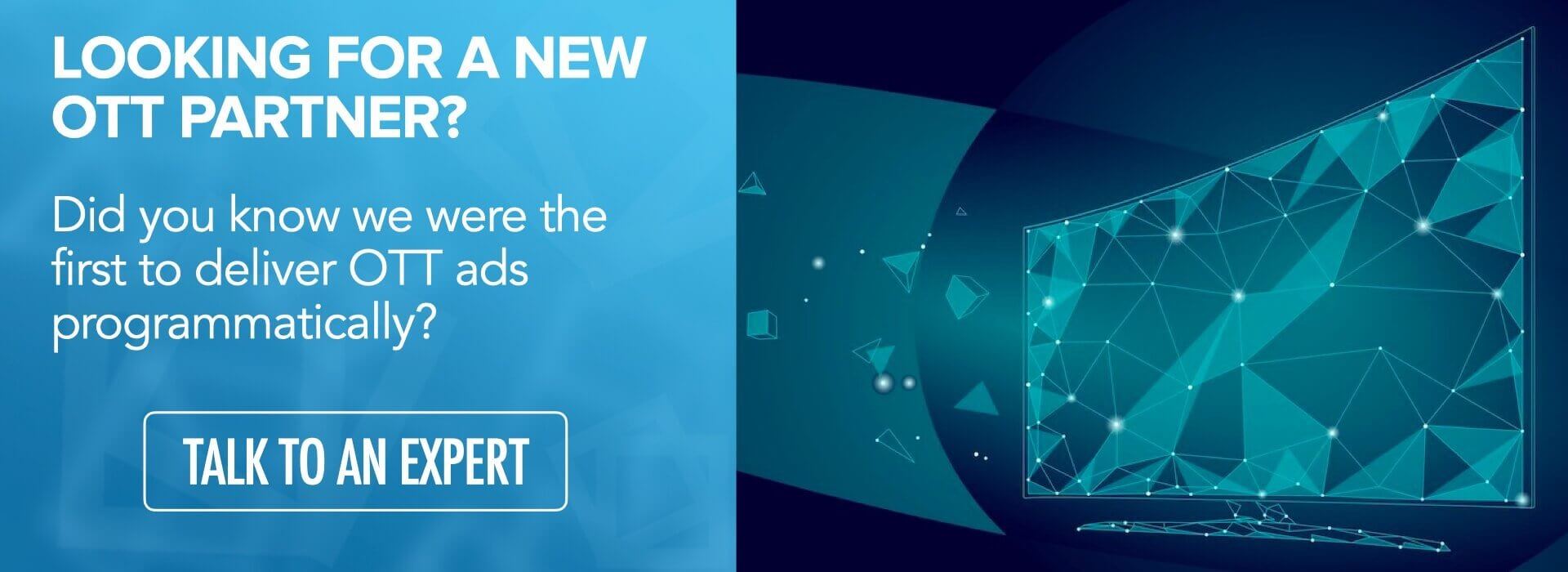
OTT video is far reaching and still changing rapidly. Strategus is thrilled to be a pioneer in the space and at the forefront of this still development industry. Contact us to hear more about our thoughts or consult our experts on your next VOD campaign.

Andy Dixon is a seasoned Content Writing Specialist at Strategus, renowned for his expertise in creating engaging and impactful digital content. With over a decade of experience in content creation, Andy has honed his skills in a variety of niches, ranging from technology and marketing to education.
Strategus is a managed services connected TV(CTV) advertising agency with over 60,000+ campaigns delivered. Find out how our experts can extend your team and drive the result that matter most.
Talk to an Expert
Seeking a Custom CTV Strategy That Delivers?
What to read next
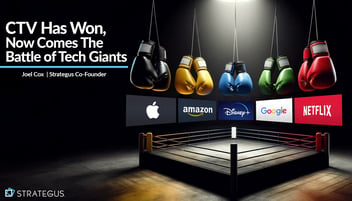
CTV Has Won, Now Comes the Battle of the Tech Giants
Who will be the winner with Amazon, Netflix, Google, Apple, and Disney battling for CTV supremacy? Just a few years ago, a phenomenon called...
6 minutes read

What Is Addressable TV Advertising and How Does It Work
In the early days of TV, ads were placed based on the programs they supported. This means that every household tuning into a given broadcast would...
7 minutes read

10 OTT Trends Shaping CTV Advertising in 2024
In the 17 years since Netflix launched its streaming service, over-the-top (OTT) media has become standard. What started as a novel concept now...
15 minutes read

What Is an Ad Exchange and How Does It Work
Before ad exchanges, media inventory was exclusively purchased through direct negotiations with publishers. This worked fine in the early days. But...
8 minutes read



